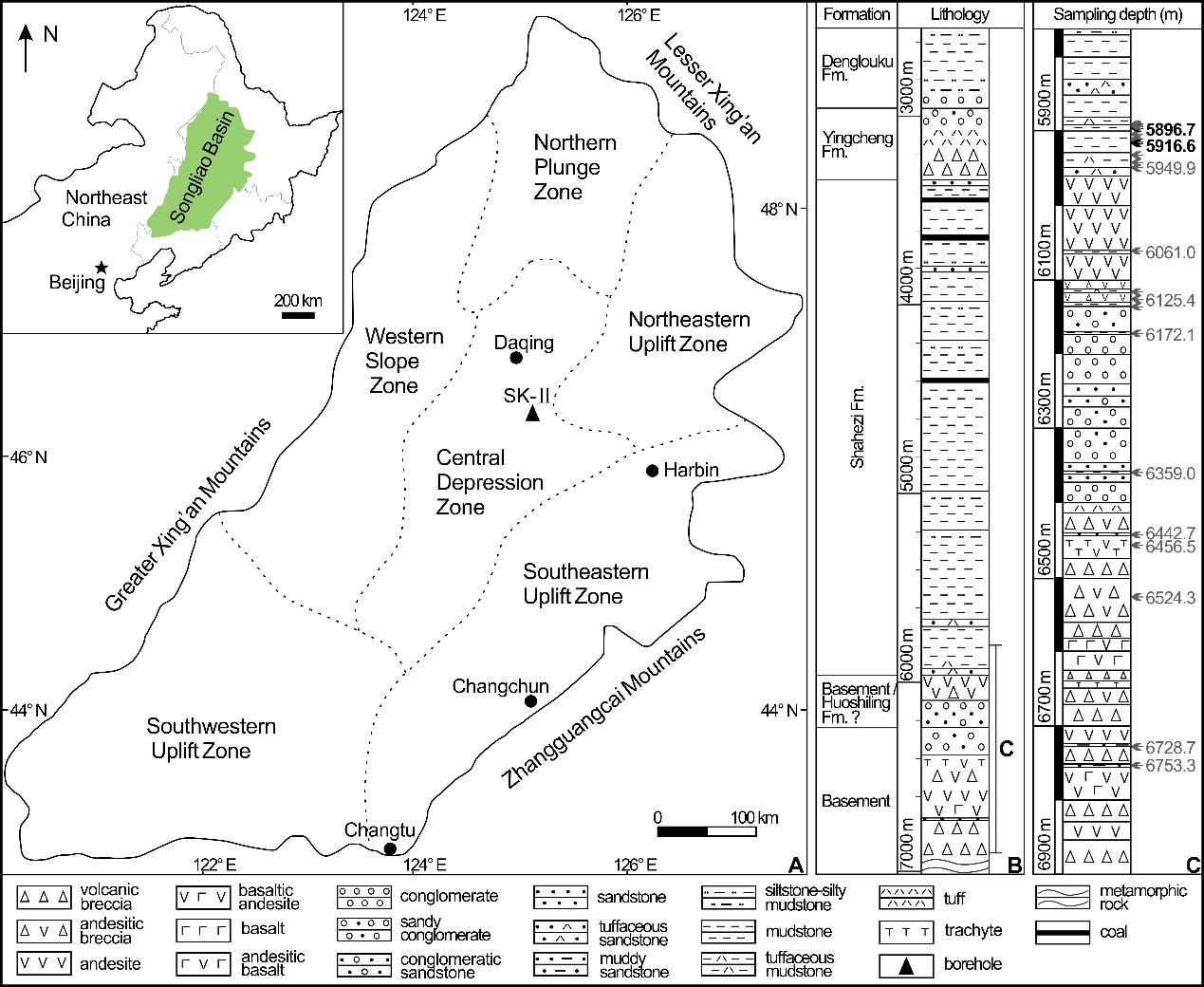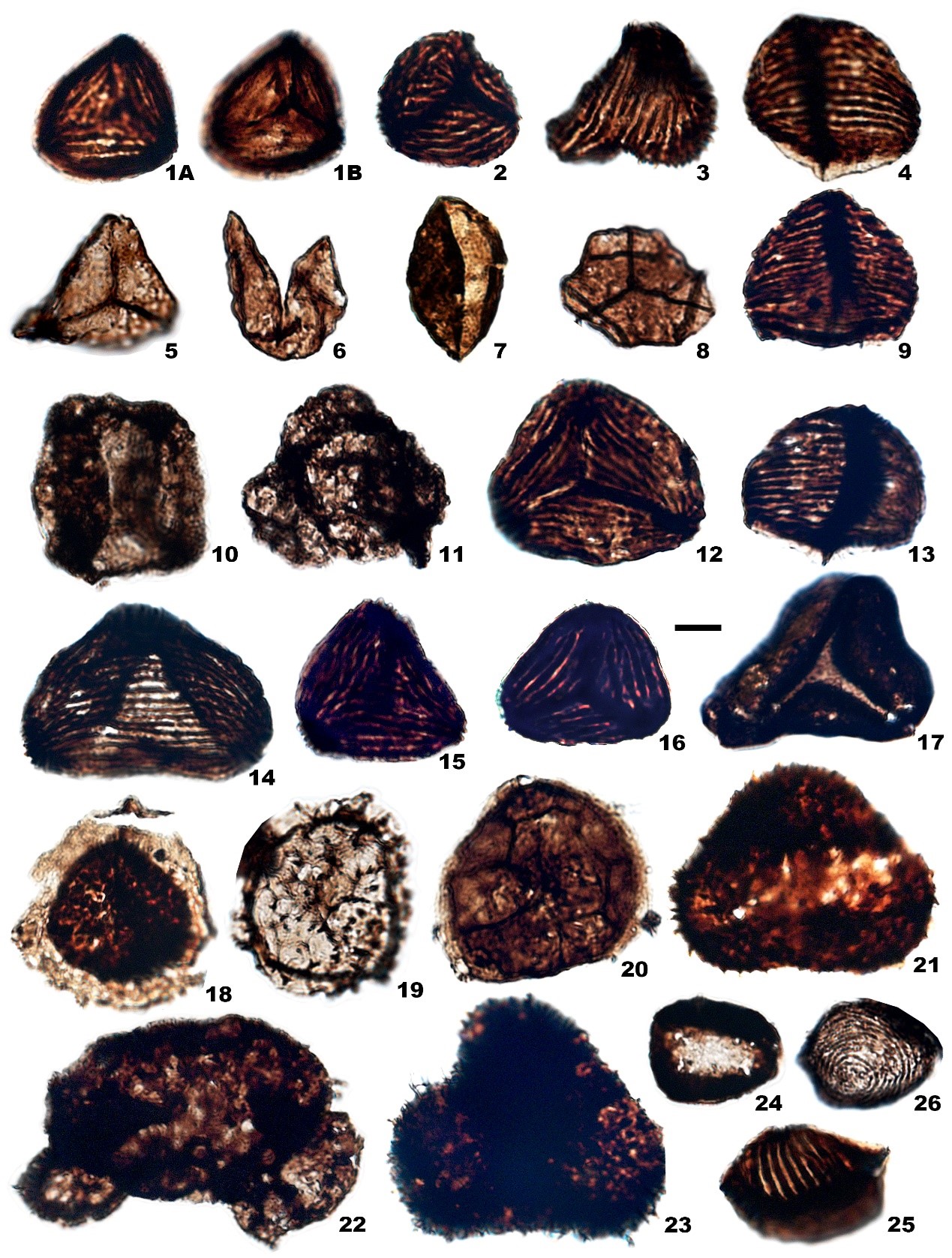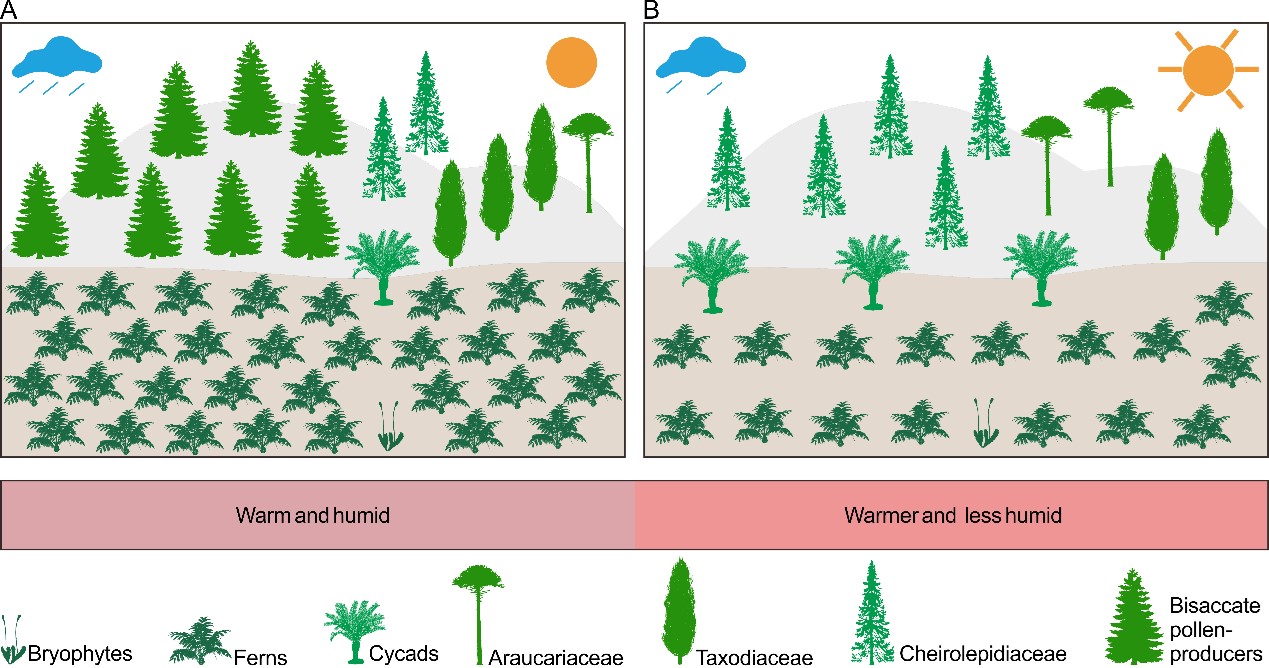The Songliao Basin, the largest petroliferous basin in China, contains multiple sets of Cretaceous hydrocarbon source strata. Clarifying its formation age, mechanisms, and environmental context is not only crucial for deciphering the enrichment and burial processes of organic matter under the Cretaceous greenhouse climate, but also helpful for the hydrocarbon exploration. However, the basin’s tectonic evolution and formation age remains controversial, and little is known about the palaeovegetation and palaeoenvironment during its primary formation.
The International Continental Scientific Drilling Project (ICDP) in the Songliao Basin successfully retrieved a continuous Lower Cretaceous core with a thickness of 4134.81 m from the SK-II borehole, penetrating the strata from the Denglouku Formation down to the volcanic basement. Among these, the Shahezi Formation that represents the primary basin fills at the syn-rift stage of the Songliao Basin and thus marks the commencement of the basin is >2000 m thick, leaving it an excellent archive to address the aforementioned issues.
Notably, it has been a long-standing challenge for the hydrocarbon exploration of the Lower Cretaceous in the Songliao Basin, due to deep burial, relatively strong metamorphism, and scarcity of fossils. The same is true of the Lower Cretaceous in the SK-II borehole which yields very few fossils. Recently, a systematic palynological analysis of the lower Shahezi Formation down to the basement in the SK-II borehole (Fig. 1) was conducted by a team led by Professor LI Jianguo from the Nanjing Institute of Geology and Palaeontology, Chinese Academy of Sciences (NIGPAS), and the Academician XU Yigang from the Guangzhou Institute of Geochemistry, Chinese Academy of Sciences. They recovered a relatively diverse palynological assemblage near the base of the Shahezi Formation (Fig. 2). It is the lowest and closest fossil record to the basin basement obtained in the SK-II borehole to date and provides robust biostratigraphic evidence for the primary formation time of the Songliao Basin. The work has just been published in the journal of Cretaceous Research.
This palynological assemblage is dominated by fern spores, among whichCicatricosisporitesof the Schizaeaceae is not only the most abundant but also relatively diverse. Early Cretaceous taxa such asPilosisporitesare also found in the assemblage. These findings provide reliable biostratigraphic evidence to constrain the lowermost Shahezi Formation to an Aptian age, supporting the view that primary formation of the Songliao Basin is at early to middle Aptian. The palaeovegetation surrounding the basin at that time is implied to be dominated by ferns in association with abundant conifers of Cheirolepidiaceae, Pinaceae, Taxodiaceae and Araucariaceae, and some cycads and bryophytes. The climate is deduced to be warm and humid tropical to subtropical during the sedimentary inception of the Songliao Basin, with a slight drying and warming trend (Fig. 3). This climatic change is consistent with the records of the Oceanic Anoxic Event (OAE 1a) in marine settings, implying it a likely response of the terrestrial ecosystem to the OAE1a in the mid-high latitude regions. Besides, the research also suggests the base of the Shahezi Formation should be at the depth of 5960 m in the SK-II borehole, rather than at 5670 m, 5695 m, or 5720.4 m, etc from a palynostratigraphic point of view.
This work was supported by the Postdoctoral Fellowship Program of CPSF and the National Natural Science Foundation of China.
Reference:Miaoqin Lin, Jianguo Li*, Yixiao Wu, Tan Tan, Yigang Xu*, 2025. Vegetation and climate during the primary formation of the Songliao Basin, NE China. Cretaceous Research, 106217. https://doi.org/10.1016/j.cretres.2025.106217.

Fig. 1 A. Simplified geological map of the Songliao Basin, Northeast China; B. lithological column of the core section, SK-II borehole; C. lithological column of the studied interval, showing sampling depths

Fig. 2 Representative pollen and spore taxa of the lower Shahezi Formation in the SK-II borehole, Songliao Basin.

Fig. 3 Schematic Diagram of palaeovegetation and palaeoclimate in the Songliao Basin during the early–middle Aptian
Download:
